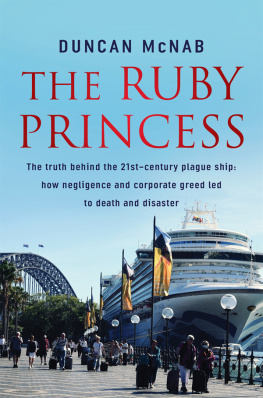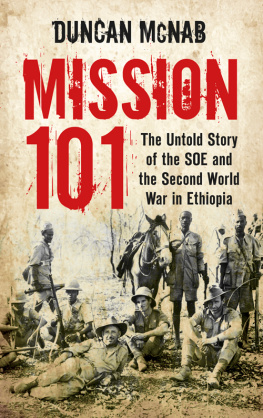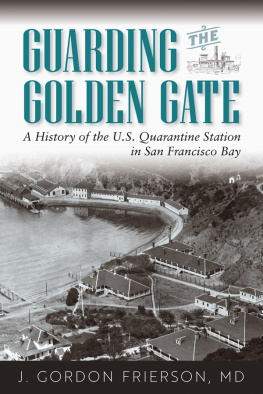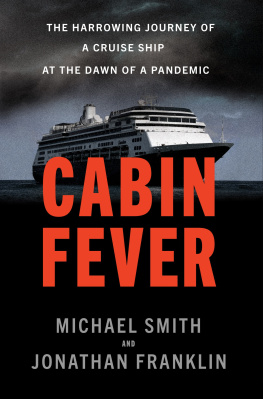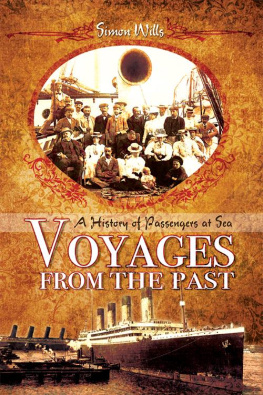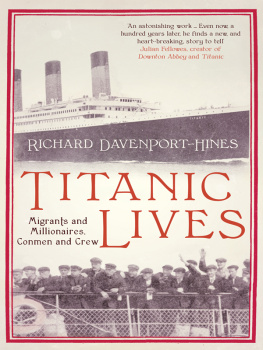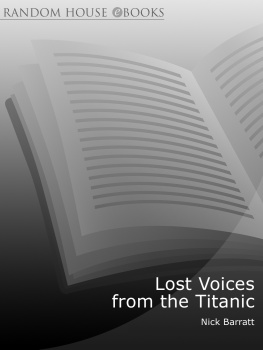About The Ruby Princess
In the early hours of Thursday 19 March 2020, the luxury cruise liner Ruby Princess docked at Sydneys Circular Quay, the gateway to Australia.
Hours later, 2700 passengers disembarked. Yet in the middle of a pandemic sweeping the planet, there were no health checks. Over the next few days, the passengers got some bad news. The COVID-19 virus had infected some on the ship, and it spread rapidly. Eventually over 900 passengers and crew would be diagnosed, and 28 would die from the disease.
Months of investigation and a Special Commission uncovered a series of catastrophic mistakes, from negligence to the corporate greed of an industry with a history of only caring for its bottom line. This super-spreader incident was a viral bomb that exploded in the heart of Australias biggest city - and a disaster that could and should have been prevented.
In his page-turning book, investigative journalist Duncan McNab explores the causes of the spectacular quarantine failure, the cruise industry, the lives of the victims and their families, and the turbulent politics of blame.

CONTENTS

PROLOGUE
In the first quiet hours of Thursday 19 March 2020, Princess Cruises luxury cruise liner the Ruby Princess slipped through the Sydney Heads and up the harbour to berth at the Overseas Passenger Terminal at Circular Quay. The spot is the gateway to both the city and the nation, flanked by the Sydney Opera House to the east, the Sydney Harbour Bridge to the west and the CBD Australias most populous to the south. Just after dawn, the precinct is a transport hub, alive with commuters arriving by ferry, bus and train.
The liner described in its marketing as a luminous jewel on the seas and a romantic destination in itself disgorged its 2700 passengers into the morning throng. They queued for buses, trains, taxis and hire cars to take them home, to hotels, to train stations and to the airport. Some went on to travel domestically by plane, others internationally to Asia, the Unites States, Canada, the United Kingdom and Spain.
The lustre of that gushing marketing and the liners splendid days at sea would dim considerably a little over twenty-four hours later. What the commuters, passengers and crew hadnt known was that the majestic liner resting at the wharf was a viral bomb. The disembarkation of the passengers was that bomb detonating.
The following afternoon, the New South Wales Ministry of Health, the state government department and organisation responsible for final health clearance required for passenger disembarkation, announced that some of the travellers had tested positive for the deadly coronavirus (COVID-19).
But by then, the damage was done. The price of the unchecked spread of the virus among the Ruby Princess crew and passengers would eventually be the lives of around twenty-two passengers and over 700 people infected. By the end of April, this was roughly one-tenth of all those infected in Australia and almost a quarter of those who succumbed to the virus. This staggering toll would only be surpassed months later in yet another debacle, this time in the quarantine hotels in Melbourne that led to the long lockdown of the entire state of Victoria.
There was a litany of failures and miscommunications and a substantial amount of potentially misleading information in the lead-up to the ships disastrous return. The mess was such that the New South Wales Police Commissioner Mick Fuller announced on 5 April that the states homicide squad would lead a criminal investigation into the event, saying:
The key question that remains unanswered, and a criminal or coronial investigation will need to be conducted, was if Carnival [owner of Princess Cruises] or crew were transparent in conceptualising the true patient [and] crew health conditions relevant to COVID-19.
Under state legislation, some of the deaths associated with the COVID-19 outbreak on the Ruby Princess in New South Wales were reportable to the coroner, with an inquest likely to be ordered. The issue of a criminal investigation, while prompting a few scoffs, was credible. Under section 18 (1)(a) of the New South Wales Crimes Act 1900, murder is a consideration where a death was caused by an act done or omitted with reckless indifference to human life. Following closely behind murder is manslaughter and crimes like negligent acts or omissions causing grievous bodily harm and that might include dying or falling gravely ill.
*
The road to these deadly failures began on 8 March 2020, when 2700 passengers joined over 1000 crew members on the Ruby Princess for what so many described as the trip of a lifetime. By that time, Princess Cruises had two liners the Diamond Princess and the Grand Princess already in the grip of COVID-19 outbreaks. Passengers from the Diamond Princess were still being repatriated after spending most of February in strict quarantine off the coast of Yokohama in Japan.
The Grand Princess was preparing to dock in San Francisco after spending nearly two weeks circling at sea with passengers isolated in their cabins. In the lead-up, on 28 February, Princess Cruises owner, Carnival, posted a video of its Chief Medical Officer, Dr Grant Tarling, on YouTube one of the companys preferred communication tools to reassure the many pensive upcoming travellers of Carnivals commitment to their safety and wellbeing.
Tarling said: I wanted to take a minute to provide some information you might find helpful to keep you healthy and safe, not only while travelling but also in your everyday lives. He went on:
We find ourselves in a unique position, to share what weve learned from our recent experiences, including the deep partnerships with global health experts from the World Health Organization, and the United States Centers for Disease Control and Prevention. These learnings will help you stay healthy and guide even more enhanced measures beyond our already rigorous health and safety protocols for our guests and teams on board.
But the learnings itself, an irritating contrived word favoured by bureaucrats or lessons mentioned by Dr Tarling in his YouTube presentation hadnt been learnt. The enhanced measures and rigorous health and safety protocols were elusive.
Around this time, cruise expert Professor Ross Klein of Canadas Memorial University who has written extensively on cruising, publishing both academic papers and books on the subject and giving evidence in numerous court cases brought against operators noting the spread of the virus and the Diamond Princess and Grand Princess messes, forecast that the impact of COVID-19 on the cruise industry was potentially staggering. While information on sales had yet to emerge, the various lines share prices were telling. Professor Klein said:
It was certainly affecting the value of their stock on the New York Stock Exchange. The stock prices have been dropping. There is going to be a dip in income if nothing else by the ships that are being idled because of the virus.
*
With this as a backdrop, the Ruby Princess left Sydney on 8 March, ill-prepared to handle a virus that would spread throughout the ship, then a city, a state and, ultimately, a nation.

